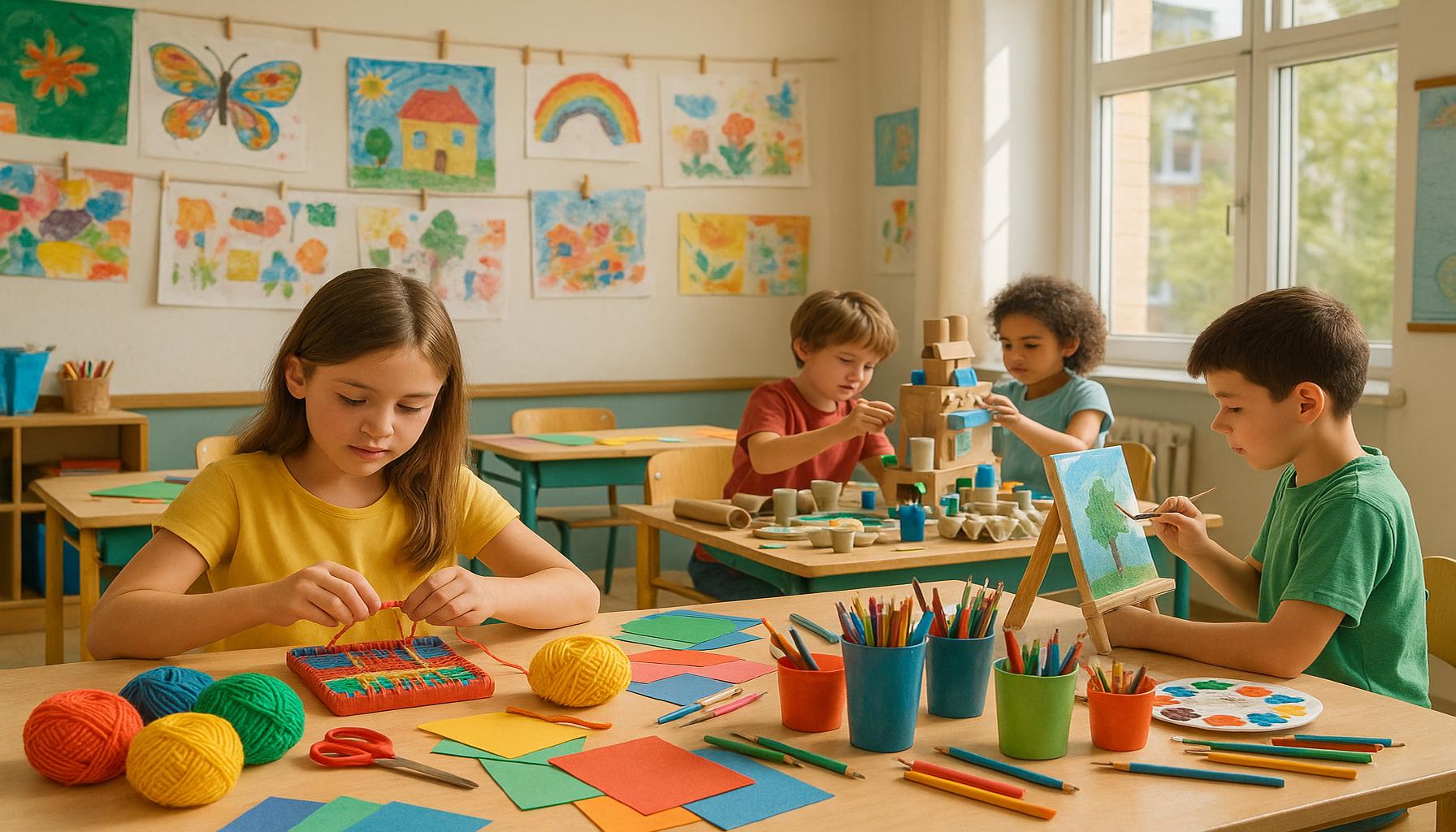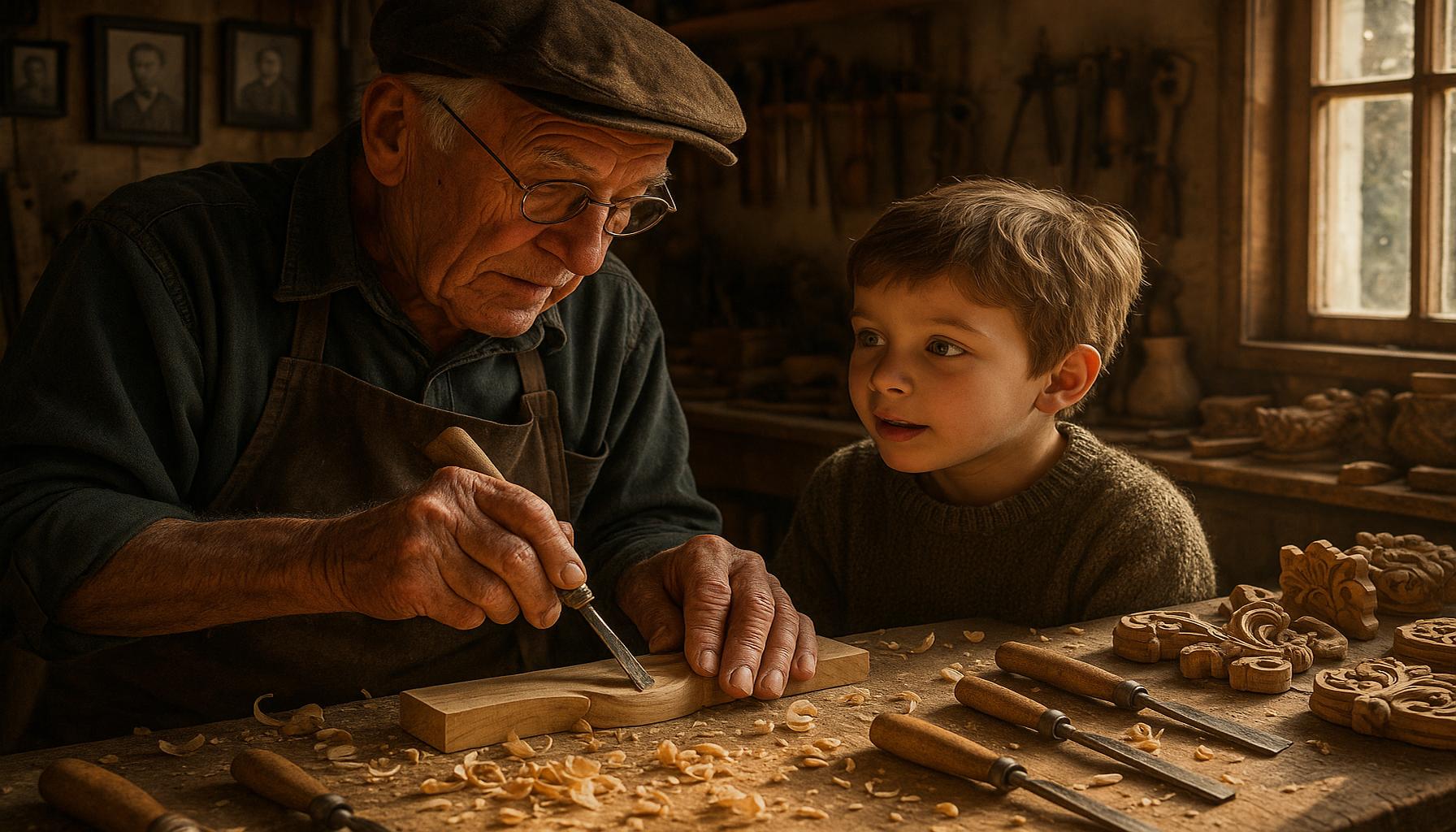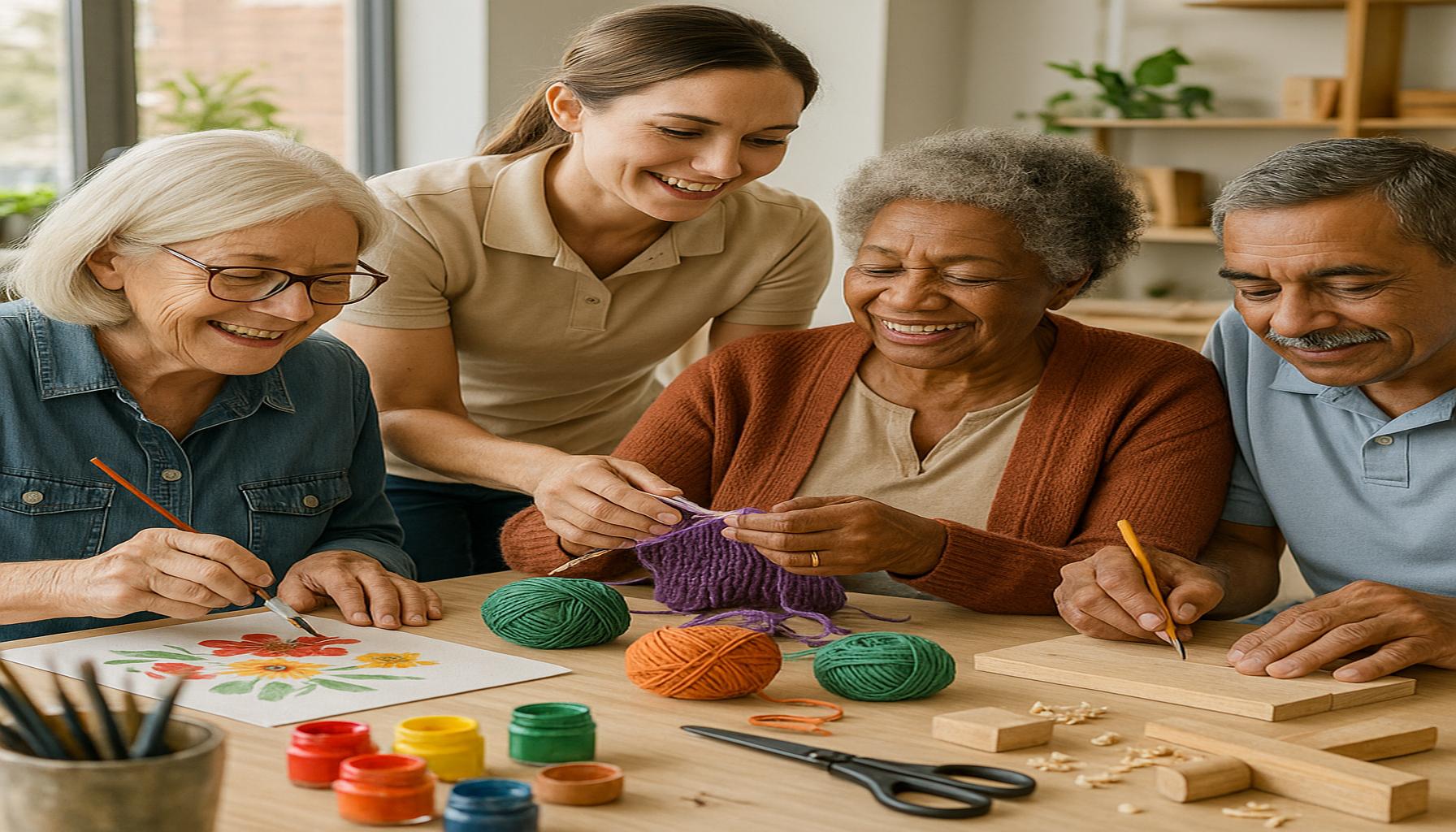The Influence of Crafting on Modern Aesthetics: Redefining Contemporary Design and Art
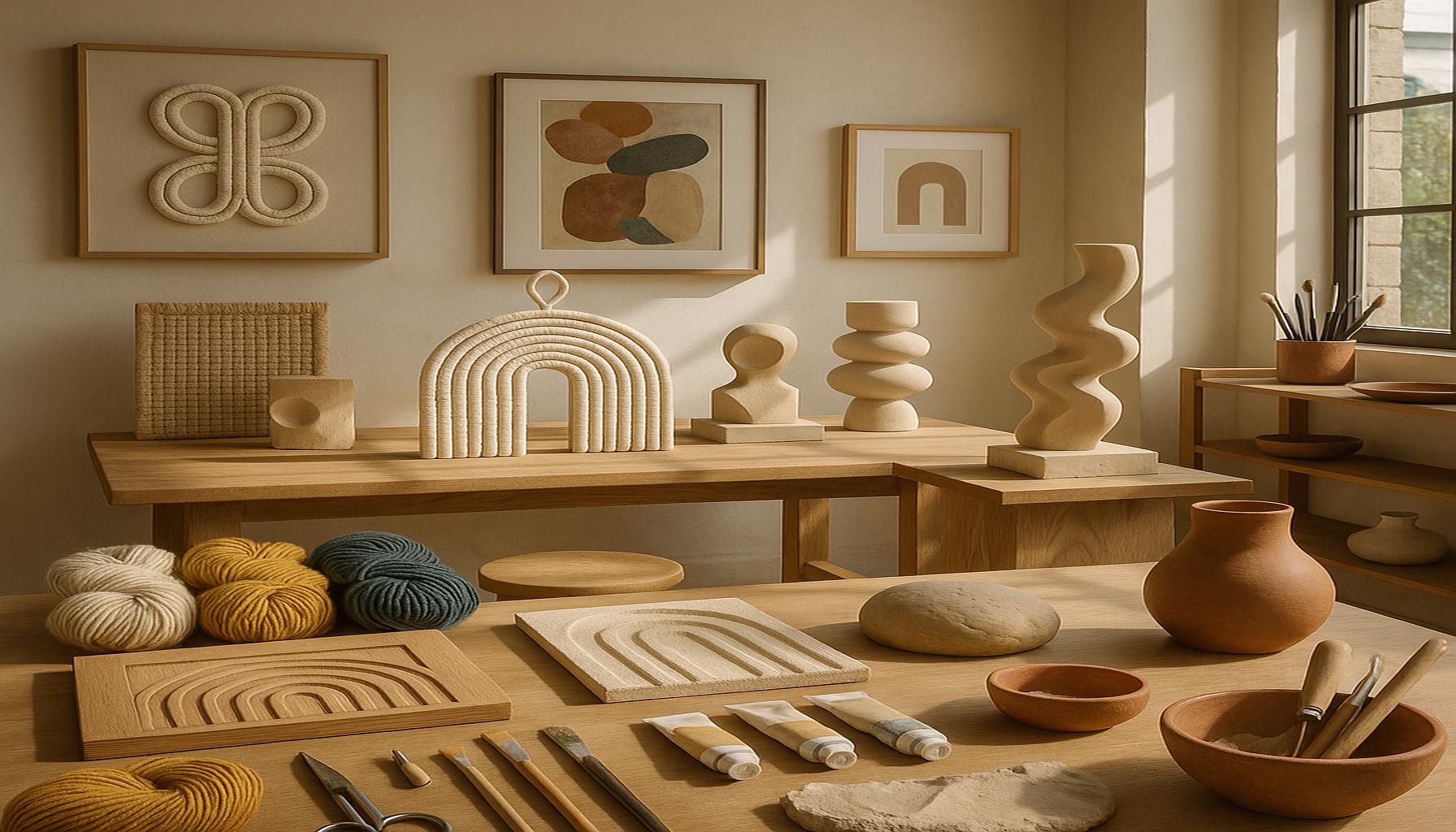
The Resurgence of Crafting in Modern Design
In an era where technology dominates, crafting emerges as a refreshing counterpoint, reshaping the landscape of contemporary design and art. The resurgence of handmade elements reflects a desire for authenticity and a connection to human creativity. Today, crafting influences not only personal expression but also mainstream trends. As individuals increasingly seek unique and meaningful pieces, the demand for handcrafted goods has surged.
- Artisan Revival: There is a growing appreciation for handcrafted items that tell a story, from artisanal coffee mugs to handwoven textiles. This movement is fueled by a desire for personal connection to the products we use every day. Markets such as local craft fairs and online platforms like Etsy have empowered artisans and small businesses to flourish, showcasing their unique stories and craftsmanship to wider audiences.
- Sustainable Practices: Eco-friendly crafting is reshaping consumer choices and design practices. Many crafters are opting for sustainable materials, such as upcycled fabrics or responsibly sourced wood, to create their artworks. For example, brands like Patagonia are not just making clothing but embedding an ecological message in every stitch, promoting sustainability as a core value.
- Integration of Technology: Contemporary artists incorporate digital tools to enhance traditional crafting techniques. Innovative tools like 3D printers and laser cutters have entered the hands of artisans, allowing them to blend old-world craftsmanship with modern technology. This hybrid approach not only expands creative possibilities but also raises new questions about the definition of art and craftsmanship.
This blending of old and new creates a dynamic aesthetic that challenges conventional norms. By emphasizing the beauty of imperfections and the unique character of handcrafted goods, crafting fosters a more personalized and emotionally resonant approach to art and design. It invites consumers to appreciate the skill and time invested into each piece, engendering a sense of respect for the labor that goes into creating something unique.
Consider the impact of local artisans and DIY culture, which have gained significant traction across the United States. Cities like Portland and Austin are hotspots for artisan crafts, where galleries and makerspaces are thriving. These movements not only redefine aesthetics but also foster community engagement, making art accessible through workshops, classes, and collaborative projects.
As we delve deeper, we will explore how crafting’s influence can be seen in various domains, from fashion trends that celebrate handcrafted accessories to architectural designs that prioritize handmade details. The implications for future artistic expression will also be examined, as the merging of traditional craft techniques with modern sensibilities continues to evolve, reshaping our collective understanding of art in a digital world.
DISCOVER MORE: Click here to dive into different literary genres
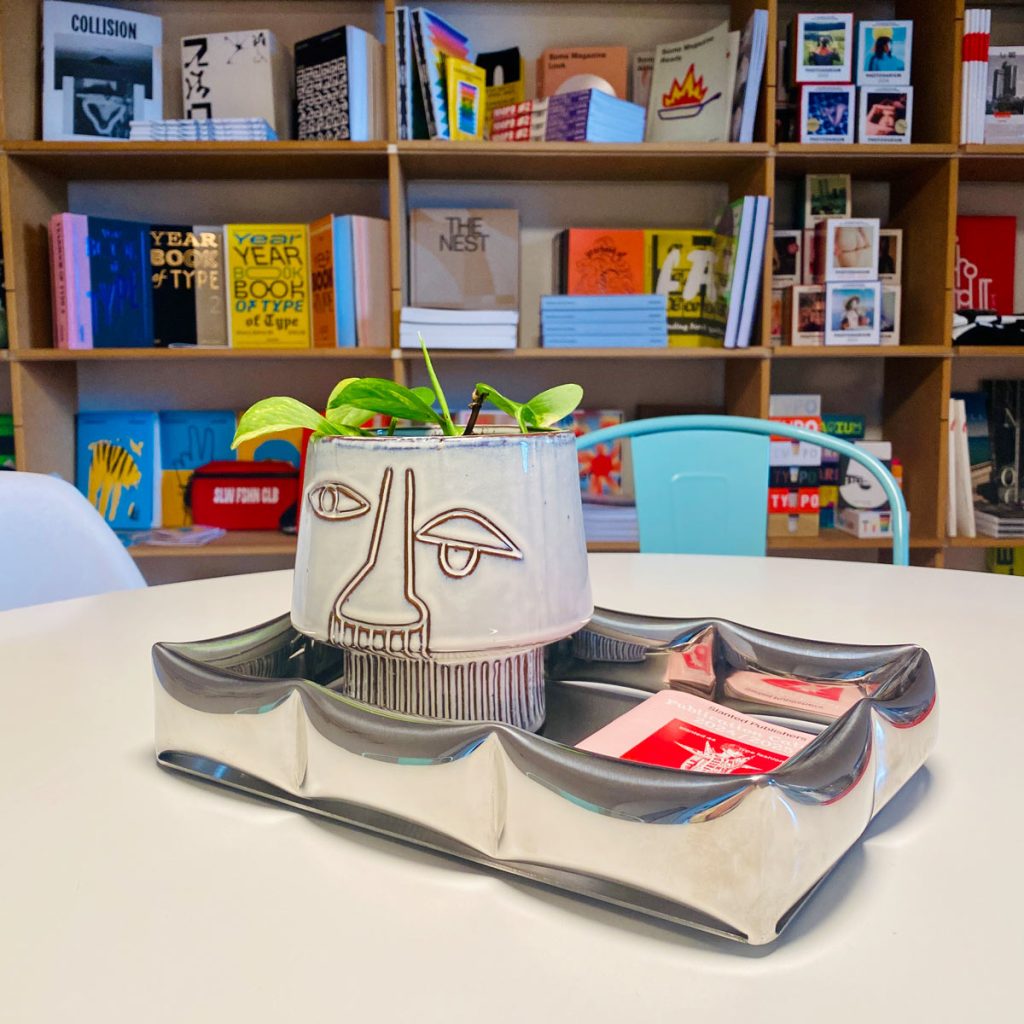
The Impact of Craftsmanship on Contemporary Aesthetics
The realms of contemporary design and art are undergoing transformative changes, largely influenced by the resurgence of craftsmanship. This revival has sparked an appreciation for handmade artistry, where the intrinsic value of time and skill imbues every piece with a narrative. As we navigate this landscape, it is essential to examine the facets through which crafting reshapes aesthetic preferences and cultural trends.
Art and Craft: A Symbiotic Relationship
One of the most profound impacts of crafting on modern aesthetics is its ability to bridge the gap between art and functionality. Many contemporary artists have found inspiration in traditional craftsmanship, merging utilitarian objects with artistic expression. This fusion can be seen vividly in the realm of home decor. Items such as handcrafted ceramics and artisan furniture are not only designed for everyday use but also serve as striking visual statements. Consumers increasingly value pieces that are unique and deeply personal, choosing items that reflect their identity over mass-produced alternatives.
Community and Collaboration Through Crafting
The crafting movement has also revitalized local communities by fostering collaboration among artisans. Workshops and collaborative spaces, often referred to as makerspaces, are popping up across the United States, from Brooklyn to Los Angeles. These hubs encourage communal learning and experimentation in crafting techniques, emphasizing the social aspect of art creation. For example, events like “Craft Night” promote inclusivity and creativity, drawing diverse participants to engage in handmade activities. This community-oriented approach not only inspires innovation but also strengthens local economies by supporting small business owners.
Crafting as a Form of Expression
Moreover, crafting serves as a powerful form of personal expression, allowing individuals to channel their emotions and experiences into their art. This is particularly evident in the resurgence of DIY culture, which empowers everyday people to create their own customized pieces, from clothing to home decor. Individuals increasingly embrace their creativity, experimenting with techniques such as knitting, woodworking, and pottery. By tapping into their own aesthetic sensibilities and personal stories, crafters contribute to a broader narrative that challenges conventional notions of what art can be.
Statistics reveal the impact of this trend, with sales of handmade products experiencing a significant rise. According to surveys conducted by Etsy, 87% of consumers value authenticity and handmade quality, indicating a shift in consumer preference towards craft-oriented goods. This movement not only signifies a transformation in purchasing habits but also showcases the growing appetite for unique artistry that reflects personal identity and cultural heritage.
In summary, the influence of crafting on modern aesthetics extends beyond mere objects; it represents a cultural shift that champions individuality, community, and sustainability. As we continue to explore this intriguing intersection, we will uncover further implications for design, fashion, and architectural innovations that are deeply steeped in the artisan tradition.
| Category | Details |
|---|---|
| Authenticity | Crafting promotes a sense of authenticity in design, allowing artists to create unique pieces that tell a story. |
| Sustainability | Handcrafted items often focus on eco-friendly materials, reducing waste while celebrating traditional techniques. |
Building on the profound impact of craftsmanship on modern aesthetics, we see a notable shift toward authenticity in contemporary art. In a world saturated with mass production, the handcrafted items embrace a deep narrative; they reflect the artist’s journey, struggles, and vision. This storytelling aspect captivates consumers, making each piece a treasure instead of mere decor.Moreover, sustainability has become a cornerstone of design philosophy today, particularly among creators who prioritize eco-conscious methods. The resurgence of traditional crafting techniques allows for a more profound connection between the maker and the material, showcasing a dedication to preserving the environment. Artists are now promoting environmentally friendly practices through their creations, appealing to an increasingly eco-aware audience. This movement not only honors the past but also paves the way for future generations who cherish artistic integrity and sustainable living. As more people become aware of these values, the impact of crafting on modern aesthetics continues to thrive, sparking curiosity and commitment to this artistic revolution.
DIVE DEEPER: Click here to discover the evolution of digital art
The Role of Sustainability in Crafting and Design
As conversations around sustainability gain momentum, crafting has emerged as a pivotal force in promoting eco-friendly practices within contemporary aesthetics. The meticulous attention to detail and the inherent value of handmade goods contribute significantly to reducing waste and the environmental footprint linked with mass production. Artisans are increasingly utilizing reclaimed materials and sustainable resources, showcasing a commitment to environmentally conscious practices that resonate with consumers. Furniture makers, for example, are now turning discarded wood into beautifully crafted, one-of-a-kind pieces that not only tell a story but also embody the principles of reuse and recycling.
The Rise of Slow Fashion
In the realm of fashion, the influence of crafting has led to the rise of the “slow fashion” movement. This paradigm shift encourages consumers to invest in quality over quantity, emphasizing the importance of craftsmanship and sustainable sourcing. Independent designers create small batches of clothing, focusing on timeless styles and durable materials instead of fleeting trends. This approach contrasts sharply with fast fashion’s emphasis on rapid production and disposability. Reports indicate that brands embracing slow fashion see increased customer loyalty, with many consumers actively seeking out ethical and artisanal alternatives over traditional retail options.
Crafting and Digital Influence
The interplay between traditional crafting techniques and digital technology also plays a significant role in shaping modern aesthetics. The rise of social media platforms such as Instagram and Pinterest has enabled artisans to showcase their work to a global audience, creating visibility for their crafting methods. This digital arena allows artists to share their processes through tutorials, live streams, and behind-the-scenes content, thus fostering a dialogue about craftsmanship and artistic value. Handmade goods are now more accessible than ever, as platforms like Etsy connect artisans to consumers looking for unique pieces. As a result, the demand for craftsmanship continues to thrive, driven largely by the influence of an interconnected online community.
The Psychological Connection with Crafting
The act of crafting also delves into the psychological benefits associated with handmade artistry. Engaging in craft activities has been shown to reduce stress, enhance creativity, and promote mindfulness. This therapeutic aspect ties into the broader aesthetic revolution where consumers are seeking more than just decorative items; they are in pursuit of experiences that foster emotional connections. Artisans often share the stories behind their creations, imbuing each piece with a sense of identity and purpose that resonates deeply with buyers. This emotional layer not only elevates the aesthetic value of handcrafted goods but also reinforces the importance of personal narratives within modern artistry.
Statistics emphasize the significance of artisanal creations in the marketplace. According to a study by the Craft Industry Alliance, 60% of consumers prefer to purchase handmade products to support local craftsmanship and sustainable practices. The convergence of crafting, sustainability, and technological advancements stimulates a vibrant cultural shift that fosters innovation in design and art.
The landscape of modern aesthetics is in a continuous state of evolution, and the role of craftsmanship is more pivotal than ever. As artisans and designers challenge the norms of production and consumption, they create new pathways toward aesthetically enriching, environmentally sound, and community-driven practices.
DIVE DEEPER: Click here to explore various literary genres
Conclusion: The Lasting Impact of Crafting on Modern Aesthetics
As we navigate the complexities of contemporary design and art, the influence of crafting stands out as a transformative force. Through its emphasis on sustainability, craftsmanship, and individuality, a new paradigm is emerging that challenges conventional production methods and encourages a more meaningful interaction with the objects we consume. The rise of eco-friendly practices, as highlighted by the growing demand for handmade items and the principles of slow fashion, signals a consumer shift towards quality and sustainability, allowing artisans to take center stage in this evolving narrative.
The integration of digital platforms has not only amplified the visibility of artisans but has also fostered a global community of creators and consumers who value the stories behind each handcrafted piece. This connectivity has propelled the demand for unique, authentic, and artfully created goods that enrich our everyday lives while supporting local economies. Furthermore, the psychological benefits associated with crafting—inviting mindfulness and creative expression—add an essential dimension to modern aesthetics, making the act of purchasing a handcrafted item a meaningful experience.
As we look forward to the future of design and art, it is clear that crafting will play a vital role in shaping our cultural landscape. The ongoing dialogue surrounding craftsmanship invites us to rethink our consumption habits and embrace a more sustainable, intentional approach to aesthetics. Embracing this shift not only celebrates the artistry embedded in each creation but also fosters a deeper connection between the maker and the consumer, redefining our understanding of what modern aesthetics can be.
